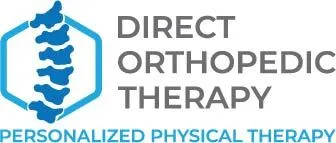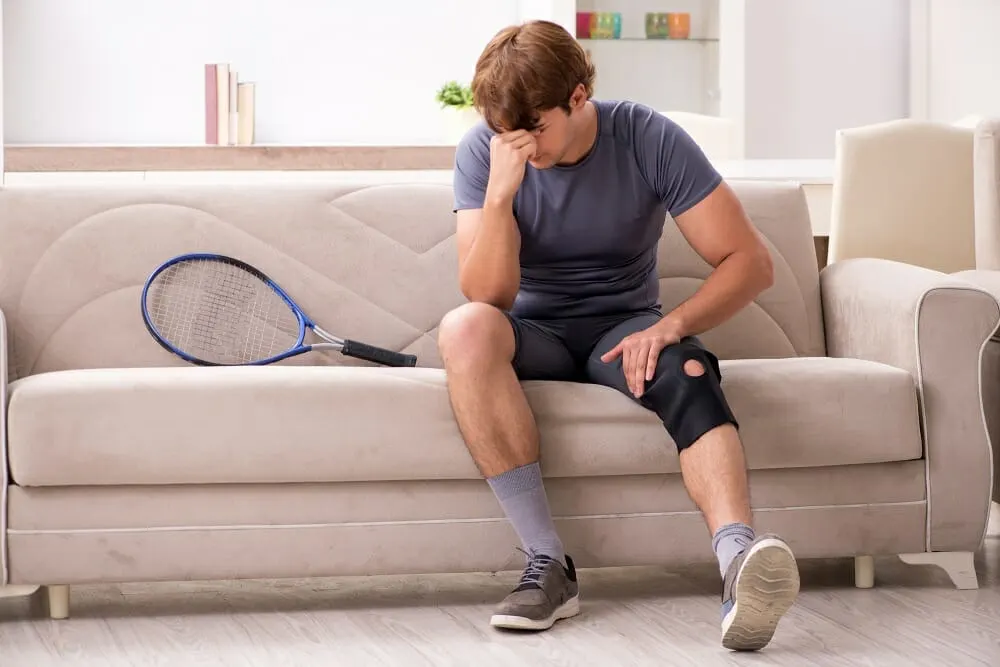You just wrapped up a killer match, served a few aces, and hustled for every point. But now? Your knees are barking. Maybe it’s a dull ache that sets in post-game, or a sharp twinge every time you squat down to pick up a ball.
Either way—knee pain after tennis is a red flag.
At Direct Orthopedic, we treat athletes and weekend warriors alike who love the game but are struggling with the price their knees pay. The good news? Most tennis-related knee pain is treatable and preventable, once you understand what’s going on beneath the surface.
In this guide, we’ll break down:
- Why your knees hurt after tennis
- Common injuries we see on the court
- How to treat it
- How to prevent it
- When it’s time to see a specialist
Whether you’re a 3.0 league player or just getting back into tennis shape, here’s what you need to know.
Why is Tennis Tough on Your Knees?
Tennis demands quick stops, pivots, lateral movement, and explosive bursts. Your knees are at the center of all of it.
Let’s break it down:
- The knee joint connects your femur (thigh bone), tibia (shin bone), and patella (kneecap).
- Ligaments like the ACL, PCL, MCL, and LCL stabilize movement.
- Menisci act like shock absorbers between the bones.
- Surrounding muscles—especially the quads, hamstrings, and calves—support and guide motion.
When you sprint, twist, or land awkwardly after a jump shot, all these structures are under stress. Tennis puts repetitive strain on the patellofemoral joint and medial knee compartment, making overuse injuries and inflammation a real risk—especially if your form, shoes, or strength isn’t where it needs to be.
The Most Common Causes of Knee Pain After Tennis
Not all knee pain is created equal. Here’s a look at the most frequent culprits we see at Direct Orthopedic.
1. Patellar Tendinitis (a.k.a. Jumper’s Knee)
Pain just below the kneecap? That’s often the patellar tendon, which connects the kneecap to your shin.
- Caused by: Overuse, hard landings, poor quad flexibility
- Feels like: Tenderness below the kneecap, worse with jumping or squatting
- Common in: Aggressive players who jump or lunge often
2. Meniscus Tear
Tennis can involve a lot of twisting on a bent knee—a perfect storm for meniscus injuries.
- Caused by: Sudden pivots, awkward landings
- Feels like: Clicking, catching, swelling, or inability to fully straighten the knee
- Common in: Older players or anyone with past knee injuries
3. Runner’s Knee (Patellofemoral Pain Syndrome)
This is a broad term for pain around or behind the kneecap due to poor kneecap tracking.
- Caused by: Muscle imbalances, poor tracking of the patella, overtraining
- Feels like: Dull ache during or after play, worsens going up/down stairs or squatting
- Common in: Players who jump back into tennis after a long layoff
4. Osteoarthritis
Tennis is joint-friendly in many ways, but high-impact play can aggravate pre-existing cartilage wear.
- Caused by: Age-related degeneration
- Feels like: Stiffness, grinding, morning pain, swelling after play
- Common in: Players over 40 or with previous injuries
5. IT Band Syndrome
The iliotibial band runs along the outside of your thigh and can cause knee pain if it’s tight or inflamed.
- Caused by: Weak hips, poor shoe support, overtraining
- Feels like: Pain on the outer knee, sharp at times
- Common in: Players doing lots of running drills or hard-court play
Diagnosing the Problem: Don’t Just Play Through It
A lot of tennis players try to “walk it off” or tape their knee and hope for the best. The truth is, pushing through pain is a gamble—you could turn a manageable issue into a serious injury.
Here’s how to approach it smartly:
Step 1: Self-Check
- Is the pain sharp, dull, or burning?
- Does it swell after matches?
- Do you feel clicking, locking, or instability?
- Can you squat or lunge without pain?
If your answer is yes to any of the above, don’t ignore it.
Step 2: Professional Evaluation
At Direct Orthopedic, we start with a full assessment:
- Hands-on knee exam
- Functional movement screening
- Imaging (X-rays or MRI) if needed
We’ll figure out whether it’s a soft-tissue issue, a mechanical tracking problem, or something deeper like cartilage loss or meniscus damage.
How to Treat Knee Pain from Tennis
Treatment depends on the root cause, but here’s a roadmap that usually works:
1. Rest + Ice
If the pain is new or mild, start with a few days off and apply ice for 15–20 minutes every 2–3 hours. Avoid NSAIDs before diagnosis, as they may mask symptoms.
2. Physical Therapy
This is our go-to solution for most tennis knee pain. A targeted PT program can:
- Strengthen weak muscles (especially glutes, quads, and hips)
- Improve flexibility and knee tracking
- Teach you movement patterns that protect your joints
Our team at Direct Orthopedic has sports-focused PTs who specialize in getting tennis players back on the court, stronger than before.
3. Bracing or Taping
Knee sleeves or patellar straps can relieve pressure, especially with patellar tendinitis or tracking issues. Just make sure they’re used as part of a rehab plan, not a permanent crutch.
4. Injections
For chronic or inflammatory cases, we may use:
- Corticosteroid injections for swelling and pain relief
- Viscosupplementation (hyaluronic acid) to lubricate arthritic joints
- Platelet-Rich Plasma (PRP) for tendon injuries or cartilage healing support
5. Surgery (as a last resort)
If there’s a torn meniscus, advanced arthritis, or failed conservative care, surgical options may be considered. Our board-certified orthopedic surgeons specialize in minimally invasive knee procedures that get you back on your feet faster.
How to Prevent Knee Pain After Tennis
You don’t have to give up the game you love. Here’s how to play smarter—not harder.
Warm Up Right
- Dynamic stretches (leg swings, hip openers)
- Light jogging or jump rope to get blood flowing
- Mini lunges and bodyweight squats to activate key muscles
Strengthen Supporting Muscles
Focus on:
- Glutes: Bridges, clamshells, single-leg deadlifts
- Quads + Hamstrings: Step-ups, Nordic curls, wall sits
- Core: Planks, dead bugs, bird-dogs
Weak hips and glutes = bad knee alignment on the court.
Wear the Right Shoes
Your tennis shoes should have:
- Good lateral support
- Cushioning for hard courts
- Low wear on the soles
Replace every 6–12 months depending on how often you play.
Vary Your Surface and Load
- Mix in clay courts when possible (softer on joints)
- Avoid back-to-back hard court matches if you’re already feeling knee discomfort
- Cross-train with swimming or cycling
Use a Foam Roller and Stretch
- IT band
- Quads
- Calves
- Hamstrings
When It’s Time to Call a Specialist
Knee pain that lingers for more than a week, gets worse with activity, or involves swelling, clicking, or instability should not be ignored.
At Direct Orthopedic, our sports medicine team helps athletes:
- Diagnose what’s actually causing the pain
- Create a personalized recovery and prevention plan
- Avoid future injuries with smart training strategies
We help tennis players of all levels—from high school stars to retirees in doubles leagues—stay in the game for the long haul.
Still Hurting After Tennis?
Let’s get you back on the court—pain-free and moving better than ever. Schedule a sports injury evaluation at Direct Orthopedic today and see how expert care can get you back to playing the way you love.



